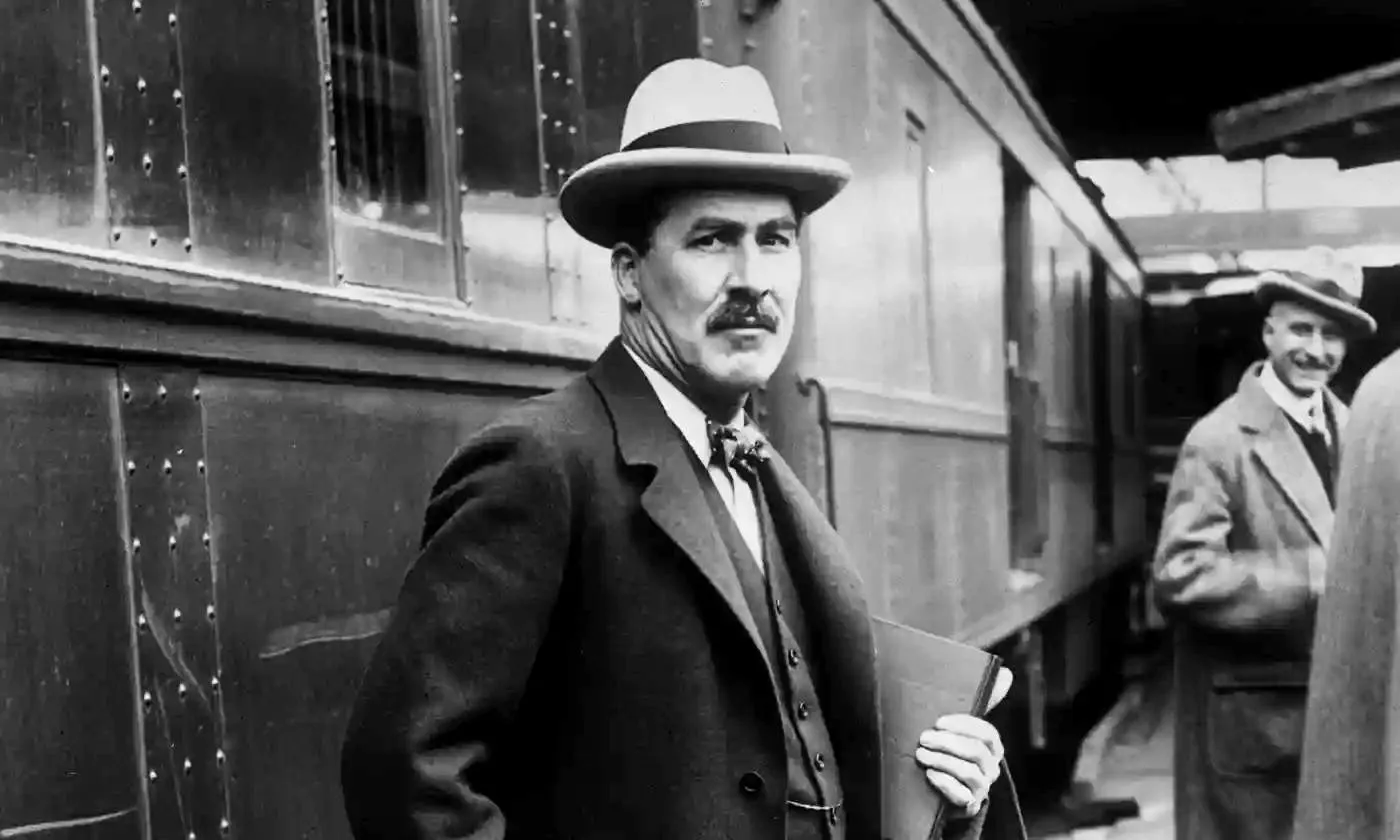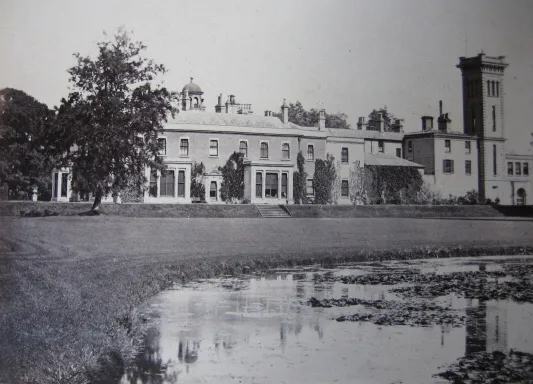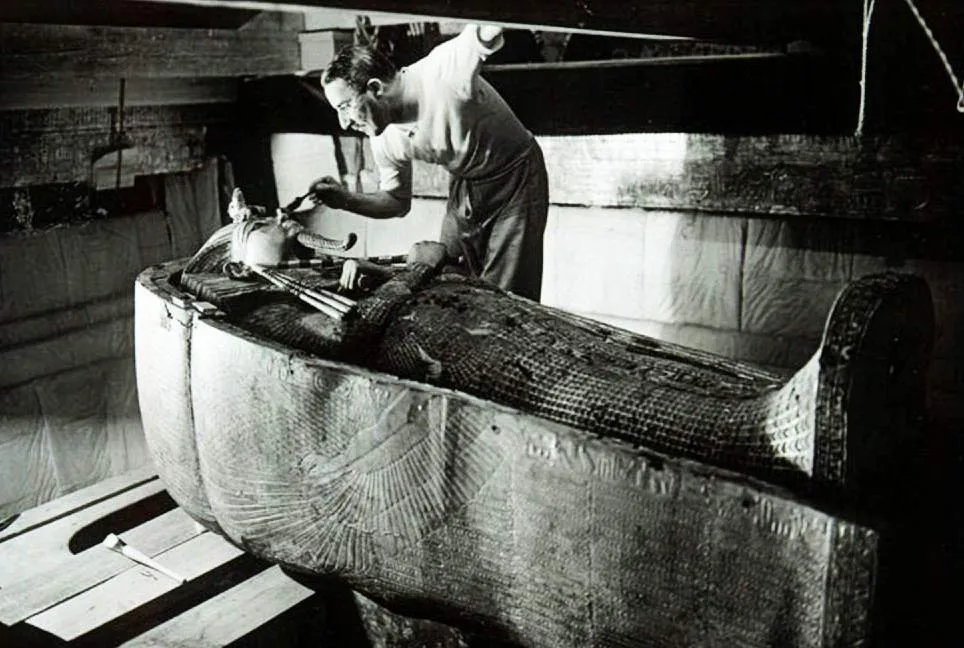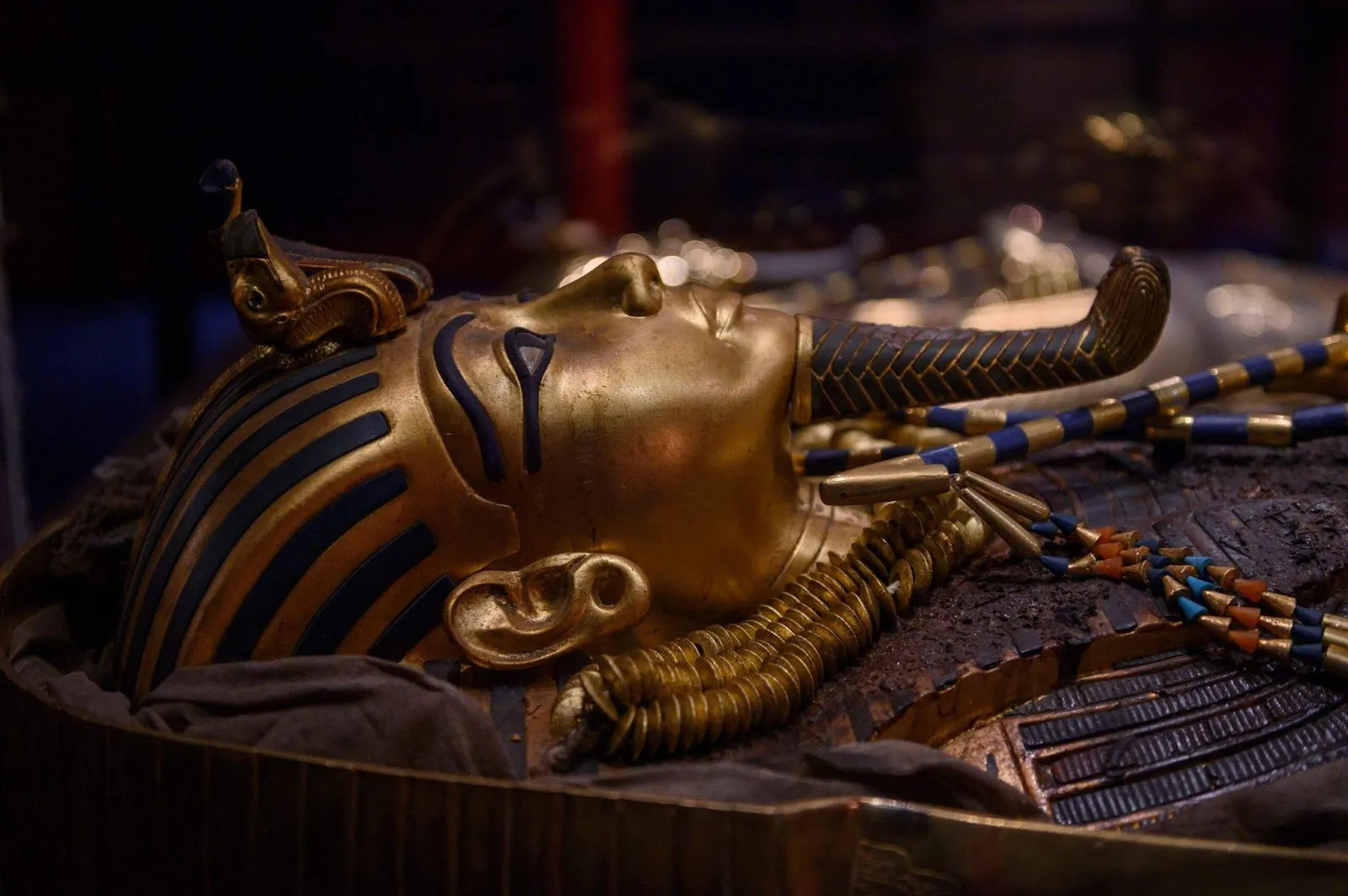Secrets of King Tut, Howard Carter and The Valley of Kings & Spies
British archeologist Howard Carter broke the seal on the tomb of the pharaoh Tutankhamun in the roaring 1920s, finding a 3,300-year-old buried treasure and unleashing ‘Tut-mania’ on the world. Before his golden discovery of the boy-king, however, Carter had a sideline - a secretive job with British intelligence.

Egypt, occupied by British forces from 1882 to 1954, was strategically located on the Suez Canal, connecting the Mediterranean and Red Seas. Carter too was ideally situated to perform secretive intelligence work, the British-born archeologist having moved to Egypt as a teenager. By the time WWI erupted in 1914, Howard was 40 years old and caught between his need to serve his country and his burning desire to excavate Egypt’s Valley of the Kings.
The war left him with no option. Carter, a linguist, was needed to interpret clandestine messages between French and British officials and their Arab contacts. Some historians also describe Carter as a courier and a source of local intelligence for the Allies, filling in strategists on the culture and tensions brewing in a region occupied by British forces.

Carter’s life of espionage
Carter’s archeology work was officially on hold until the end of WWI in 1918. Instead of searching for Valley of the Kings’ tombs missed by previous expeditions, Carter was sweating it out in a stiflingly hot Cairo office, retained on a meager salary for British intelligence. During one of Carter’s visits south to Luxor, at the height of anti-German sentiment, a German fort at Luxor was blown up. A coincidence, surely?
“It is part of the lore of Egyptology that Carter had a hand in it, but this is far from established," author Bob Brier writes in Tutankhamun and the Tomb that Changed the World.
Still, many note Carter’s ability to turn his hand to all manner of skullduggery. While Carter wasn’t highly educated, he was a street-smart operative, comfortable navigating a world of secret coded communications and scandal.
"The brand new social experience where you activate your gaming skills as you train like a spy."
- TimeOut
Take on thrilling, high-energy espionage challenges across different game zones.

Howard Carter: the birth of an artist
Born in 1874, he was the youngest child of 11 and inherited the artistic talent of his father, an illustrator. Much of Carter’s childhood was spent in the east of England in the market town of Swaffham. His formal education was limited so Carter fell back on sketching and artwork.

The Amherst family lived in the nearby mansion of Didlington Hall, a large Georgian house occupied by William Tyssen-Amherst, a British Conservative Member of Parliament and collector of books, art, antiques, and artifacts. Carter greatly admired the Egyptian antiques which he was allowed to sketch. Such was his passion, Lady Amherst arranged for Carter to assist a family friend in the excavation of Middle Kingdom tombs at Beni Hasan.
Carter, then 17, was to sketch tomb decorations and later temple wall reliefs. Under mentors including Sir William Flinders Petrie, Carter taught himself excavating techniques and excelled. He was soon appointed an inspector of monuments in the Egyptian Antiquities Service but resigned in 1905 after the Saqqara Affair, a violent confrontation between Egyptian site guards and a group of French tourists.
"Loyal to his men and forever obstinate, Carter defended their [the Egyptian guards] actions and refused to apologize," Archeology Magazine wrote of the incident.
Carter had a brusque demeanor, suggesting he felt a constant need to prove himself among men of higher education and social standing, writes Daniel Meyerson, author of In the Valley of the Kings. "He wasn't a particularly likeable character," Meyerson said. "He went into 'black dog' rages and he was an angry man, a very solitary man."
Carter’s decision to side with the Egyptians against the wealthy French tourists and his resignation led to two years of unemployment. He barely scraped together a living peddling watercolor paintings to tourists.

Theodore Davis, the American archeologist in search of King Tut
Carter’s fortunes turned, however, when George Herbert, the Fifth Earl of Carnarvon, hired Carter to oversee his excavations in the Valley of the Kings, the resting place of ancient Egyptian pharaohs.
The Valley had been well traversed, so Carter would have his work cut out for him.
A New York lawyer, Theodore Davis, and his team had already excavated two dozen tombs, among them Tuthmosis IV, Egypt’s ruler 1400–1390 BCE.
In 1914, Davis retired, famously remarking: “I fear that the Valley of the Tombs is now exhausted.”

The tomb of Tutankhamun
With the war over in 1918 and British intelligence no longer in need of an interpreter, Carter could finally devote himself full-time to archeology. By 1922, however, his patron’s patience was wearing thin and Carter needed to persuade the Earl of Carnarvon to continue funding the excavations.
On November 1, 1922, Carter set to work clearing debris from the huts used by men who had built the royal tombs. Days later, he found stone steps and Carter knew there was only one tantalizing explanation: the steps led to a tomb. Within weeks, the debris was cleared and more steps were found - as were the seals of the pharaoh Tutankhamun, who’d died in 1323 BCE. It was one of the most significant discoveries in the modern era.
Carter drilled into a door and poked a candle through into the room. When asked if he could see anything, Carter noted in his journal that he replied, "Yes, it is wonderful." In addition to the gold coffin, the many treasures included a royal chariot and the pharaoh's death mask.
“It was sometime before one could see,” Carter wrote. “The hot air escaping caused the candle to flicker, but as soon as one’s eyes became accustomed to the glimmer of light the interior of the chamber gradually loomed before one, with its strange and wonderful medley of extraordinary and beautiful objects heaped upon one another.”

Tutankhamun: ‘discovery of the century’
Tipped off by Carter, The Times of London broke the news on November 30, 1922: British archeologist Howard Carter and his financial backer Lord Carnarvon had discovered an intact royal tomb in the Valley of the Kings.
The Times described it as ‘the most sensational Egyptological discovery of the century’. Carter, at this stage a much shrewder businessman, signed a contract with The Times in January 1923. In exchange for £5,000 ($4,145) and 75 percent of the syndication profits, the newspaper would have exclusive rights to distribute all of his Tutankhamun news.
It was an incredible finding by all accounts, a golden royal tomb bursting with funerary treasures valued at $5m. Some 3,000-5,000 objects were reportedly cleared before the ‘official’ opening of the vault in 1923.

The enduring Tutankhamun mystery
The mystery surrounding Howard Carter and his discovery continues to this day. There have long been rumors that Carter helped himself to some of the vault’s treasures before the official opening of the tomb.
A 1934 letter revealed in Bob Brier’s book - Tutankhamun and the Tomb that Changed the World - indicates that Carter passed on a ‘whm amulet’ - used for offerings to the dead - to a British philologist, Sir Alan Gardiner, who’d translated hieroglyphs found in the tomb.
The British director of the Egyptian Museum in Cairo told Gardiner that the amulet matched other examples found in the tomb - they’d all been made from the same mold. Carter denied the theft, however, and debate has raged over it ever since.
Carter himself was buried in 1939 at the age of 64. He died from Hodgkin's disease and had withdrawn from public life at that stage. Only nine people attended his funeral, a simple service and the antithesis of the funereal procession and splendor of the Egyptian boy-king Carter had unearthed.
SPYSCAPE+

Join now to get True Spies episodes early and ad-free every week, plus subscriber-only Debriefs and Q&As to bring you closer to your favorite spies and stories from the show. You’ll also get our exclusive series The Razumov Files and The Great James Bond Car Robbery!


Gadgets & Gifts
Explore a world of secrets together. Navigate through interactive exhibits and missions to discover your spy roles.
Your Spy Skills
We all have valuable spy skills - your mission is to discover yours. See if you have what it takes to be a secret agent, with our authentic spy skills evaluation* developed by a former Head of Training at British Intelligence. It's FREE so share & compare with friends now!
* Find more information about the scientific methods behind the evaluation here.


Stay Connected
Follow us for the latest
TIKTOK
INSTAGRAM
X
FACEBOOK
YOUTUBE